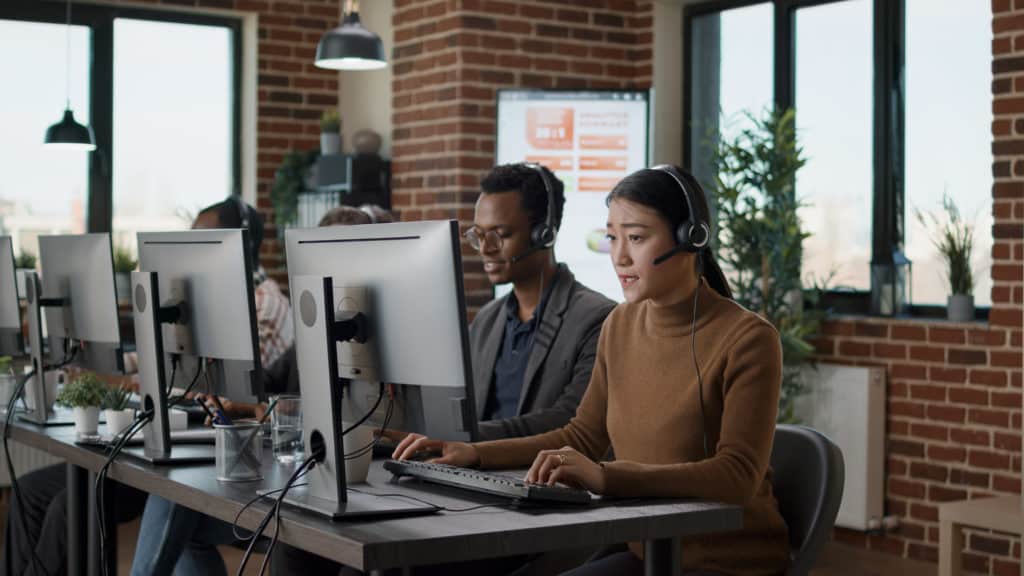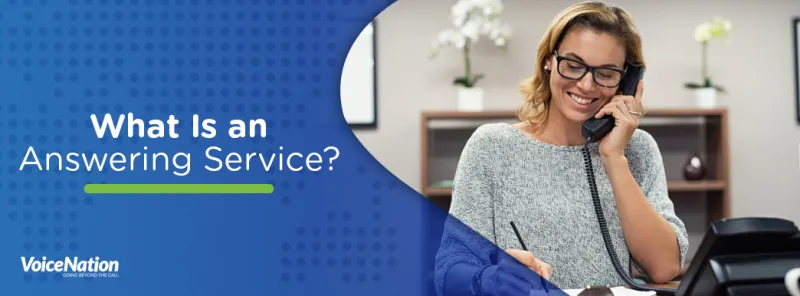All Categories
Featured
Table of Contents
- – What Is The Best How Does An Answering Service ...
- – What Is The Best The Complete Guide To Phone A...
- – What Is The Best Answering Service Faqs - Ques...
- – The Best Telephone Answering Service - Dexcom...
- – What Is The Best 24/7 Live Telephone Answerin...
- – What Is The Best Benefits Of Answering Servi...
What Is The Best How Does An Answering Service Work? Out Right Now
This device and its followers were created by Sava Jacobson, an electrical engineer with a personal consulting company. While early voice mail used magnetic tape innovation, the majority of contemporary equipment uses solid state memory storage; some devices utilize a mix of both, with a solid-state circuit for the outgoing message and a cassette for the inbound messages.
"toll conserving" below) (business call answering service). This works if the owner is evaluating calls and does not want to consult with all callers. In any case after going, the calling party must be notified about the call having actually been answered (in many cases this begins the charging), either by some remark of the operator, or by some welcoming message of the little, or resolved to non-human callers (e.
This holds specifically for the Littles with digitally stored greeting messages or for earlier devices (before the increase of microcassettes) with a special endless loop tape, separate from a 2nd cassette, committed to recording. There have actually been answer-only gadgets with no recording capabilities, where the welcoming message had to notify callers of a state of existing unattainability, or e (phone answering).
What Is The Best The Complete Guide To Phone Answering Services In The World

about schedule hours. In recording TADs the welcoming generally consists of an invitation to leave a message "after the beep". An answering device that utilizes a microcassette to tape-record messages On a dual-cassette answerphone, there is an outgoing cassette, which after the defined number of rings plays a pre-recorded message to the caller.

Single-cassette voice mail include the outbound message at the beginning of the tape and inbound messages on the remaining space. They first play the announcement, then fast-forward to the next available space for recording, then tape-record the caller's message. If there are lots of previous messages, fast-forwarding through them can trigger a significant hold-up.
This beep is frequently described in the greeting message, requesting that the caller leave a message "after the beep". TADs with digital storage for the recorded messages do disappoint this hold-up, naturally. A little might offer a push-button control facility, where the answerphone owner can sound the house number and, by going into a code on the remote telephone's keypad, can listen to taped messages, or erase them, even when far from house.
What Is The Best Answering Service Faqs - Questions & Answers Service In My Area?

Consequently the device increases the number of rings after which it addresses the call (normally by two, leading to four rings), if no unread messages are currently stored, however answers after the set number of rings (typically two) if there are unread messages. This enables the owner to discover whether there are messages waiting; if there are none, the owner can hang up the phone on the, e.
Some makers also enable themselves to be from another location activated, if they have been switched off, by calling and letting the phone ring a specific a great deal of times (normally 10-15). Some company abandon calls already after a smaller sized number of rings, making remote activation difficult. In the early days of Little bits an unique transmitter for DTMF tones (dual-tone multi-frequency signalling) was regionally required for remote control, considering that the formerly used pulse dialling is not apt to communicate suitable signalling along an active connection, and the dual-tone multi-frequency signalling was carried out step-by-step.
Any incoming call is not recognizable with regard to these residential or commercial properties in advance of going "off hook" by the terminal devices. So after going off hook the calls must be changed to appropriate devices and just the voice-type is right away accessible to a human, but maybe, nonetheless must be routed to a LITTLE BIT (e.
The Best Telephone Answering Service - Dexcomm - U.s. Based?
What if I informed you that you do not need to really choose up your gadget when answering a consumer call? Somebody else will. So practical, best? Responding to telephone call doesn't require someone to be on the other end of the line. Efficient automated phone systems can do the trick just as efficiently as a live representative and often even much better.
An automated answering service or interactive voice response system is a phone system that communicates with callers without a live person on the line - virtual telephone answering. When business utilize this innovation, customers can get the answer to a concern about your service just by utilizing interactions set up on a pre-programmed call circulation.
Although live operators update the customer support experience, many calls do not require human interaction. A basic documented message or instructions on how a consumer can recover a piece of details typically fixes a caller's immediate need - business call answering service. Automated answering services are a basic and reliable way to direct incoming calls to the right individual.
What Is The Best 24/7 Live Telephone Answering Services In Australia To Buy
Notice that when you call a business, either for assistance or product query, the first thing you will hear is a pre-recorded voice greeting and a series of choices like press 1 for client service, press 2 for inquiries, and so on. The pre-recorded alternatives branch off to other choices depending on the customer's choice.
The phone tree system assists direct callers to the best person or department utilizing the keypad on a mobile phone. In some circumstances, callers can use their voices. It's worth noting that auto-attendant choices aren't limited to the ten numbers on a phone's keypad. Once the caller has actually selected their first alternative, you can develop a multi-level auto-attendant that uses sub-menus to direct the caller to the best type of assistance.
The caller does not need to interact with an individual if the auto-attendant phone system can handle their concern. The automated service can path callers to an employee if they reach a "dead end" and require assistance from a live agent. It is pricey to work with an operator or executive assistant.
What Is The Best Benefits Of Answering Service - Professional Services Out Today
Automated answering services, on the other hand, are substantially cheaper and provide considerable cost savings at an average of $200-$420/month. Even if you don't have devoted personnel to handle call routing and management, an automated answering service improves efficiency by allowing your team to focus on their strengths so they can more effectively spend their time on the phone.
A sales lead routed to client service is a lost shot. If a customer who has product concerns reaches the wrong department or gets incomplete answers from well-meaning workers who are less trained to manage a specific kind of concern, it can be a cause of disappointment and discontentment. An automated answering system can lessen the variety of misrouted calls, therefore assisting your staff members make better usage of their phone time while maximizing time in their calendar for other tasks.
With Automated Answering Systems, you can produce a tailored experience for both your personnel and your callers. Make a recording of your primary welcoming, and just upgrade it regularly to reflect what is going on in your company. You can produce as lots of departments or menu choices as you want.
Table of Contents
- – What Is The Best How Does An Answering Service ...
- – What Is The Best The Complete Guide To Phone A...
- – What Is The Best Answering Service Faqs - Ques...
- – The Best Telephone Answering Service - Dexcom...
- – What Is The Best 24/7 Live Telephone Answerin...
- – What Is The Best Benefits Of Answering Servi...
Latest Posts
Cheap Business Answering Service Near Me
Cost-Effective Medical Answering Service
Reputable Emergency Call Answering Service
More
Latest Posts
Cheap Business Answering Service Near Me
Cost-Effective Medical Answering Service
Reputable Emergency Call Answering Service